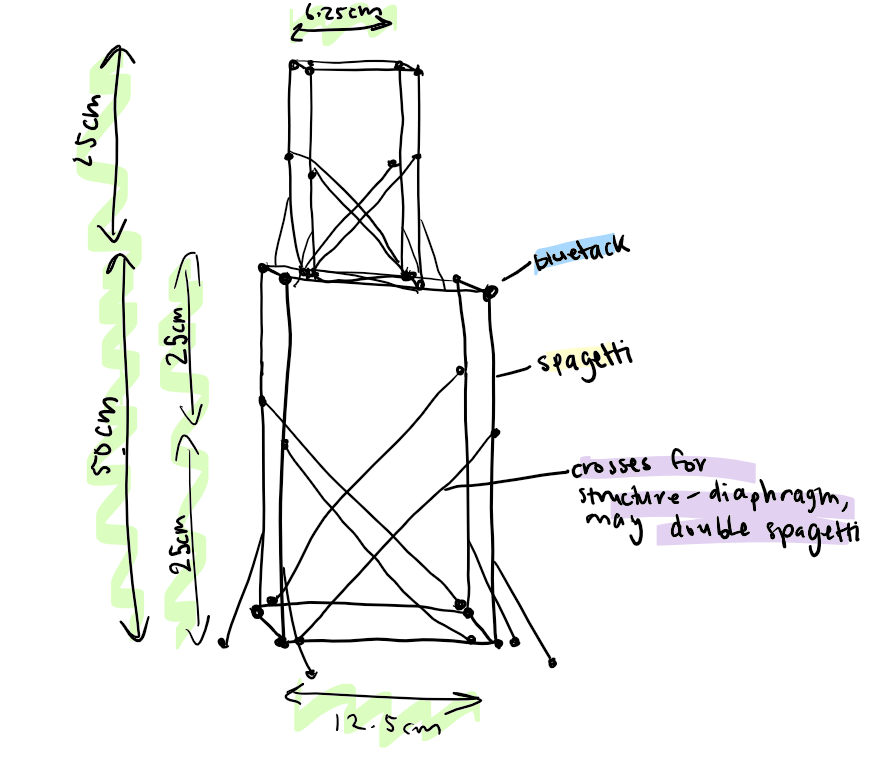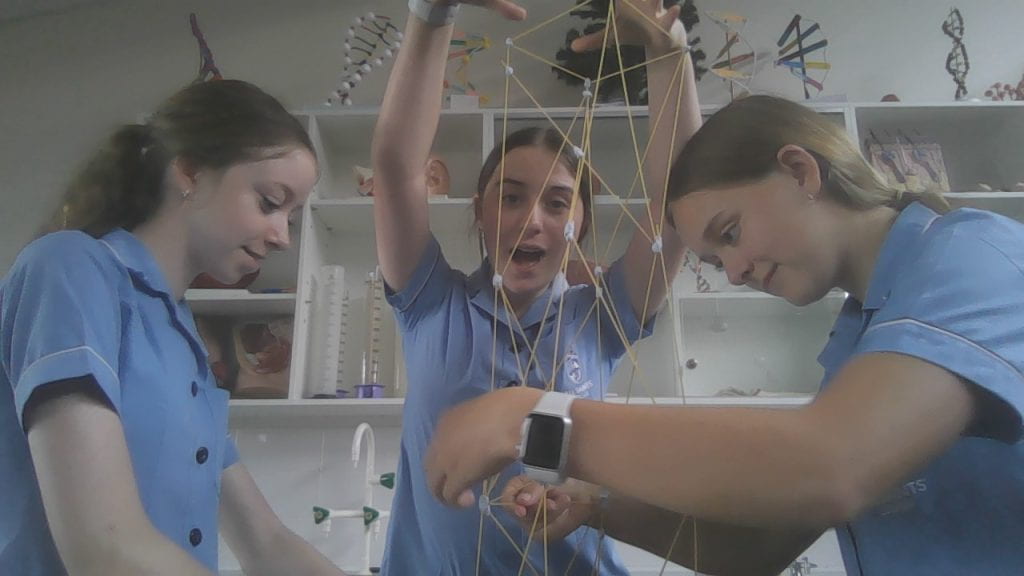This was our final assessment for science this year.
In the real world

Building earthquake-resistant buildings in the real world are very important because there are lots of populated countries that have to endure many earthquakes, usually big ones and these buildings would solve many problems.
Design Brief
- is quick and easy to assemble
- has a minimum height of 60 cm
- has a maximum base of 30 cm x 30 cm
- has a flat platform on the top level of at least 5 cm x 5 cm (this will be supplied to you)
- remains standing after an earthquake, as simulated by shaking a table for 10 seconds
- is constructed from the materials supplied by your teacher
- costs less than $60 to build, given the material costs listed below. This budget will be provided twice: once for the initial prototype, and once again for the second prototype.
50-minute design sprint
We were challenged to build a building out of spaghetti and blu-tack. We had a test at the start where we made out first prototype of the building. we could do trial and error and had 50 minutes to build it. My group had done no prior planning and just went with what we thought would be stable. There was a success criteria that we had to follow when we were building. We had to make sure that our building was 60cm, that it was quick and easy to assemble and other things like that. It had to withstand the earthquake simulator which did P waves, S waves and surface waves. We built a rectangle with a big base, and then built it up, but as were going, it wasn’t staying stable so we added 2 spaghettis for the sides. At the end of the 50 minutes, the building collapsed. we hadn’t really tried to do other shapes or structures, we just did the same thing and just went along with it.
Our first prototype didn’t contain all the things from the criteria and definitely didn’t withstand the wave simulator.
In our second building lesson, we used all the money we had – $40 on spaghetti and $20 on blu-tack. We had done a bit of research at home – looked at other earthquake-resistant buildings, and then started to build. This time, we did a smaller base, so everything could be more intact. We added structures across the sides and through the middle of the building. This seemed to help it stay stable throughout us building, and when we tested the different types of waves ourselves, it withstood it well. There were a couple of spaghetti pieces that fell off when we were shaking the building, but we fixed those and reinforced them with more blu-tack. We were thinking about different shapes that were very strong, and we found that triangles are. We didn’t build a triangle, because we thought it would be are to connect to another shape, and then we wouldn’t be able to get the height we needed.
In the end, are building exceeded the height requirement and fit all the other criteria. we could flip it upside down and it wouldn’t break, and it went very well in the wave simulator. It only took up 35 minutes to build including the testing time. I think that because my group and I all worked so well together, we got a very good outcome.
Designs



This was our final design. we had to work out the measurements of each of the spaghetti so that we knew many to use to make it 60cm or over. When we were building, we decided to make the rectangles on the drawing both the same and not make one smaller. This was better because it was easier to make everything all the same size and it was more stable.


Conclusion
In conclusion, our second design was so much better and performed very well compared to our first design. It took a shorter time to build and we all knew what we were doing. The extra pieces of spaghetti we added and the shape we did, made our building very stable. We all worked very well together and contributed all our ideas. We understood what we were building and what we were adding to make it better and intact. Next time, I think that we could add the extra structures in more strategic spots so it wasn’t as messy.